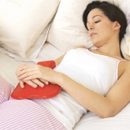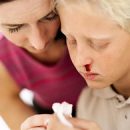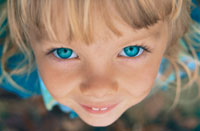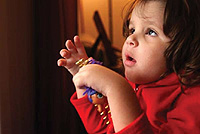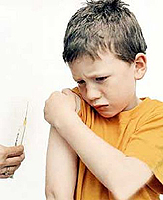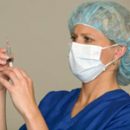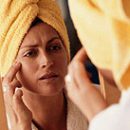A healthy five-year-old child wakes up at night, crying, complains of pain in the legs, can not sleep long. In pediatrics, this symptom is called «Health pain», and its appearance is in no way connected with the disease. About what is pain of growth and how to help the child in case of their appearance - in the article.
Content
- When growth pain arise?
- How to distinguish pain growth from injury and disease?
- What to do when the child appears in the child?
- What is recommended to remove pain in the legs and facilitate the suffering of a child?
Pain in the legs in children are not always connected with injuries and diseases of bones, joints, ligaments and muscles. In most cases, they are due to the physiological processes occurring in the body's body, especially violently flowing in periods of violent growth and hormonal rearrangements. The symptom is the name of the growth of growth and in one or another form meets every second child.
When growth pain arise?
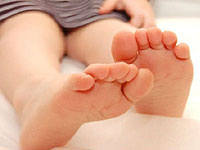 The growth of the child implies an increase in all parts of its body in length and width, primarily due to the growth of the skeleton and muscles. By four years, children usually double their growth, fixed at birth, and to 12–13 years — triple. The most active kids grow up to the year, then their growth slows down and up to 4–5 years becomes more uniform. The first leap jump is observed in the boys in a five-year-old, and girls at a six-year-old. The second jump occurs accordingly in the boys in 9, in girls at 10 years old, when literally for the year children grow up at 15–20 centimeters. The third stretching period coincides with the adolescent period, begins at 13–15 years and ends to 18–20 years.
The growth of the child implies an increase in all parts of its body in length and width, primarily due to the growth of the skeleton and muscles. By four years, children usually double their growth, fixed at birth, and to 12–13 years — triple. The most active kids grow up to the year, then their growth slows down and up to 4–5 years becomes more uniform. The first leap jump is observed in the boys in a five-year-old, and girls at a six-year-old. The second jump occurs accordingly in the boys in 9, in girls at 10 years old, when literally for the year children grow up at 15–20 centimeters. The third stretching period coincides with the adolescent period, begins at 13–15 years and ends to 18–20 years.
The appearance of pain in the legs is associated with periods of the rapid growth of the child, in particular with a rapid increase in the length of the lower extremities. The causes of the growth pain doctors are still arguing, most binds their appearance with uneven growth of bones and tensioning their periosteum, which causes irritation of pain receptors and the appearance of fragments in the legs. The emergence of night pain and cramps in the muscles of the legs can be due to the tension of muscle fibers, lagging behind in the growth of the tubular bones of the lower extremities.
How to distinguish pain growth from injury and disease?
Growth pain most often arise in the field of the heads, in particular in the calf muscles and ankle joint, under the knees, in the area of the outer surface of the hips. Pains can wear a wide varied nature and vary from weak sensations to strong spasms.
Weak stupid bones in the bones, muscles and bundles arising during the day usually remain unnoticed. There is nothing surprising: the child is constantly in motion, it is passionate about the game and other interesting activities, weak stimpers are not able to distract him from the study of the surrounding world. Pains in the legs begin to disturb the child in a state of rest, more often during falling asleep, sleep and awakening. Complained complaints in the bones and joints, very painful muscle cramps often arise, feeling numbness and stiffness in the limb. The child's sleep is broken, which, in turn, exacerbates the situation.
A characteristic feature of growth pain is to volatile. Most often they arise in one limb and never localize in one place. The child is complaining of ankle pain, it indicates a sore knee or thigh.
Growth pain is not long, they pass quickly and independently, not having time to cause severe suffering.
Growth pain is not accompanied by an increase in body temperature, do not worsen the overall state of the baby. It does not accompany the change in the fabrics of the limb, they are not characterized by the appearance of swelling, redness of the skin over the joints, limiting the mobility of bone joints and the appearance of chromotype.
What to do when the child appears in the child?
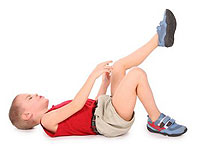 First of all, you should pay the attention of the children's doctor on the kid's complaints, eliminate the finiteness injury and the dislocation, fractures, stretching and muscle breaks and ligaments. Sometimes volatile pain in the bones and muscles turn out to be the first symptoms of influenza. Sustainacles may be associated with arthritis, in particular with rheumatoid arthritis arising from angina or pharyngitis. Full examination of the child will remove suspicions about the disease and focus on combating growth pain.
First of all, you should pay the attention of the children's doctor on the kid's complaints, eliminate the finiteness injury and the dislocation, fractures, stretching and muscle breaks and ligaments. Sometimes volatile pain in the bones and muscles turn out to be the first symptoms of influenza. Sustainacles may be associated with arthritis, in particular with rheumatoid arthritis arising from angina or pharyngitis. Full examination of the child will remove suspicions about the disease and focus on combating growth pain.
First of all, the appearance of growth pain should pay attention to the nutrition of the child. During the period of active growth, it particularly needs uninterrupted flow of nutrients, especially proteins, vitamins, in particular vitamins A and D, and trace elements, such as calcium, magnesium, phosphorus and iron. In the diet of the child there must be enough meat, fish, liver, eggs, dairy products, vegetables, fruits and cereals. In addition, additional intake of vitamin and mineral food additives is required.
The growth of the child is controlled by hormones, in particular a somatostatin, the main amount of which is synthesized during sleep. That is why a full dream is important for the health of the child.
The growth of the child affects stresses accompanied by the emission of a large amount of adrenaline. The kid should grow in a friendly environment that promotes the normal functioning of a pituitary system that produces somatostatin.
What is recommended to remove pain in the legs and facilitate the suffering of a child?
- Leave a child in bed.
- Slightly massage the sore leg using light stroking, rubbing, kneading movements — the child himself will indicate how it is better for him.
- During massage, you can use warming ointments, gels, balms, essential oils — The main thing is to take into account the age of the child and comply with the acceptable dosage.
- It is useful to attach to a patient a warm warmer or organize a baby warm bath, it will help him relax and remove the muscle tension.
Attention! Apply painkillers, it is possible only by the appointment of a doctor. As a rule, pain associated with growth do not require the use of drugs, and if it is not possible to cope with the described methods, it is worth thinking about another reason for malaise.

